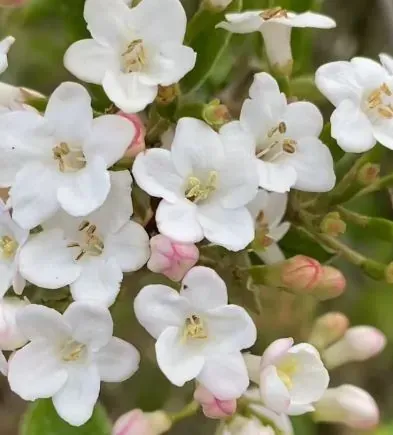Wild Beauty of Algeria: Viburnum lantana and Its Botanical Significance

Taxonomy:
Kingdom: | Plantae |
Phylum: | Tracheophytes |
Class: | Angiosperms |
Class: | Eudicots |
Order: | Dipsacales |
Family: | |
Genus: | Viburnum |
Species: | V. Lantana |
Viburnum lantana, commonly known as Wayfaring Tree, is a resilient shrub native to parts of Algeria. Recognized for its ornamental beauty and ecological value, this plant also holds traditional medicinal uses.
Introduction
Algeria is home to an astonishing variety of native plant species, including many with ecological, medicinal, and cultural significance. Among these is Viburnum lantana, a perennial shrub that flourishes in the Mediterranean zones of the country. Known for its creamy-white flowers and dense berry clusters, this wild plant is a quiet but valuable member of Algeria's native flora.Synonyms:
Viburnum rigidum, Viburnum cotoneaster
Viburnum lantana var. glabratum ChabertHow to Identify Viburnum lantana
Leaves: Oval, wrinkled, toothed edges, grayish underside
Flowers: Small, creamy-white, in flat-topped clusters (May-June)
Fruits: Red berries turning black when ripe (slightly toxic when raw)
Bark: Gray-brown, slightly fissured
|
Type
Of Plant |
Life
Cycle |
Height |
Flowering
Time |
Altitude |
|
Shrub/deciduous |
Perennial |
0.5 m to 3.5 m |
May-Juin |
0 -1900 m |
|
Mediterranean |
Edible |
Color |
Abundance |
Toxicity |
|
Yes |
No |
Cream-White |
Common |
Toxic/Low |
Other Common Name:
|
Arabic |
Berber |
English |
French |
Other
Name |
|
Elouachna |
Zanzoula,Takhzount |
Wayfaring Tree |
Viorne lantane |
Durillo blanco,Wayfarer |
Where to Find It in Algeria: Exact Locations
Viburnum lantana grows primarily in the Tell Atlas Mountains and Djijel region, favoring:
Mountain slopes and forest edges (Boumerdes, Bouira, and Tipaza)
Mediterranean coastal woodlands
Oak and cedar mixed forests
It prefers limestone-rich soils, moderate altitudes, and semi-shaded to sunny exposures.
Algerian Distribution
While not widespread in arid or Saharan zones, Viburnum lantana is naturally distributed in:
- Northern Algeria
- Tell Atlas regions
- Humid and sub-humid zones with Mediterranean climates
Traditional Uses:
Medicinal: Leaves used in folk remedies (astringent properties)
Craft: Flexible stems used in basketry
Related
species:
§ Viburnum Odoratissimum -Awabuki
§
Viburnum
Macrophyllum
§
Viburnum
rigidum
§
Viburnum rhytidophyllum
§
Viburnum Tinus -Laurustunis
§
Viburnum
Tomentosum
§
Viburnum
Prunifolium
§
Viburnum
suspensum














No comments: